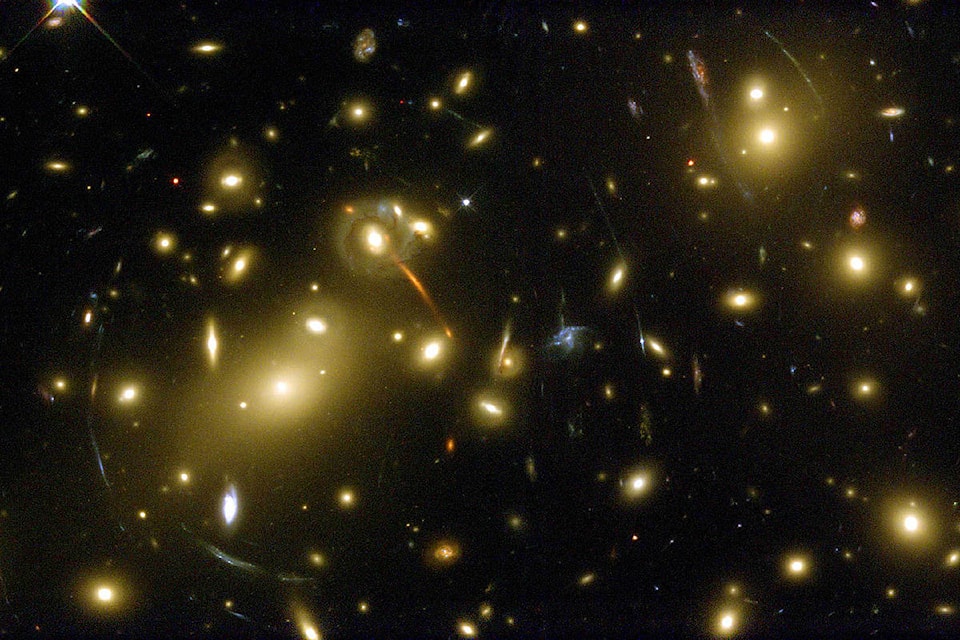When objects are too distant for even the most powerful telescopes to resolve, astronomers now turn to lenses created by nature to help them see deeper into the most distant regions of the universe.
Karun Thanjavur, a senior astronomy lab instructor with the University of Victoria, will share his knowledge about gravitational lenses at Nanaimo Astronomy Society’s first meeting of 2018 when he presents Peering Through Nature’s Telescope: Gravitational Lensing as a Window Into the Distant Universe.
Thanjavur’s interests as an observational cosmologist includes discovering and using gravitational lenses to study the universe. In 2009, as part of his doctoral thesis, he developed an automated technique to find these natural lenses in images made of the cosmos.
Albert Einstein predicted the possibility of gravitational lensing through his general theory of relativity. The first such lenses were discovered in 1979 and hundreds have been catalogued since.
Simply put, light waves bend as they pass through gravitational fields created by massive objects, such as galaxies.
“If you have a gravitational lens, which is just due to a single galaxy for instance, then the focal length or the magnifying power is fairly limited,” Thanjavur said. “But if you have 100 galaxies put together in what is called a galaxy cluster, then that would magnify, or the boost that you would get in magnification would be much higher… The higher the magnification boost, the fainter the objects that can be magnified and made visible.”
Gravitational fields affect not just visible light, but wave frequencies across the electromagnetic spectrum.
“In fact, the first gravitational lens … was done in the radio wavelengths…” Thanjavur said. “Electromagnetic radiation, being of the same nature – despite whether it’s an X-ray, visible light or radio waves – they all get affected by the same phenomenon.”
When bent light rays converge or become focused near the Earth, the effect is like a camera lens focusing the image on its film or sensor.
“You have different types of lenses and the focus is determined by the curvature – how much [light] is bent – so you can carry that same analogy to a gravitational lens,” Thanjavur said.
Gravitational lensing also allows astronomers to see farther back in time to the early days of formation of galaxies in the universe.
“Even with something like Hubble [space telescope] we haven’t been able to detect those early galaxies, so we had no way of knowing when those first galaxies evolved in the universe,” Thanjavur said. “But with this boost due to gravitational lenses we have been able to travel farther back in time. The biggest surprise was how efficient the universe was at making these galaxies, so we have discovered galaxies within the first billion years of the lifetime of the universe. Like, at a few hundred million years, already the first galaxies were in place. That’s a remarkable thing when you think about how long it takes for things to evolve, given chance occurrences.”
Nanaimo Astronomy Society’s meeting happens Thursday, Jan. 25, 7-9 p.m. at Beban Park social centre.
Admission is free for society members or for non-members attending their first meeting.
For more information, visit www.nanaimoastronomy.com.
